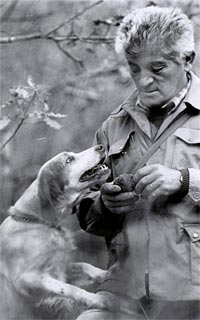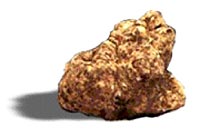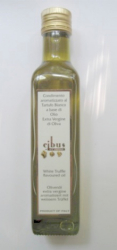Truffles - "Diamonds of the Kitchen"
Mystery and mystique through the ages
Few foods have held the curiosity and imagination of scientists, philosophers and poets as the truffle. The ancient Greeks believed truffles appeared where lightening struck to explain their random distribution. Gourmand Brilliat-Savarin (1755-1826) noted the truffle's aphrodisiacal properties and ability to attract both people and animals. He called them "black diamonds," and they became as indispensible as butter in the kitchens of emperors, kings, popes and cardinals.
Biology
Truffles are more humble in appearance than the well-known mushrooms (porcini, chanterelles or morels) and their origins are more humble, too. Truffle mycospores grow on the roots of various trees, such as oak, linden, poplar and willow, where they provide their hosts with soil minerals in exchange for carbohydrates. Truffles prefer the roots of broad-leaved trees in sunny locations with chalky soils and are found in a relatively loose and shallow humus layer.
For this reason, the best truffles prefer the Mediterranean microclimate of 44-45 degrees latitude, such as in France, Italy and Spain. Other truffle areas include the Balkans (particularly Istria), Hungary, and Turkey.
Some 28 European truffle species exist, most of which are inedible. Of the leading edible truffles, we feature the following:

Tuber magnatum pico (Alba or white truffle)
The white truffle is the most valuable truffle. The meat is white, and its skin ranges from white on beige to yellow in color. It emits an intense, almost penetrating scent. In Italy the white Alba truffle, native to Piedmont, northern Italy, is considered as valuable and as appreciated as white gold. The Alba truffle thrives in Alba region, but is not dependent on territory, found also in Istria and other parts of the Mediterranean.
Alba truffles range in size from a cherry to a small apple.
Tuber melanosporum (Périgord black truffles)
The Périgord truffle is the most well-known truffle, traded on various levels of quality:
Surchoix / Super Extra, peeled or brushed. Ripe, solid, and very smooth in size and color. Between the size of a walnut and a large fist.
Extra, peeled or brushed. Ripe, firm, whole, may be slightly irregular in color and size. Between the size of a walnut and large fist.
Morceaux, truffle pieces which are more or less dark and have a diameter of 0.5 cm fall into this category.
Tuber aestivum (Black summer truffle)
Solid, dark brown truffles with yellowish meat. On average, about 30 grams. Sweet and pleasant taste. The summer truffle is less common than other truffles. Harvest time is from May to August, but it continues to grow in September to early November, when its color and flavor change slightly. Thus, for many the "summer truffle" is actually an "autumn" truffle.
Truffle Seasons
Tuber magnatum pico (Alba or white truffle)
> October through late December
Tuber melanosporum (Black Perigord truffles)
> Early December to mid-March
Tuber aestivum (Black summer truffle)
> May to November
Italian White Truffle flavored oil
Top quality extra virgin olive oil aromatized with white truffle essence. From Pesaro Urbino region near Tuscany. Ideal for soups, cream sauces, risotto, asparagus, mashed potatoes, scrambled eggs, cheeses, etc.






